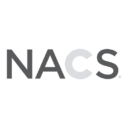
Insights
Are you using vendors in your tech stack for the core function they bring to your organization?

To compete in today’s business environment, merchants must rely on the core competencies of a specialized, diverse technical stack. This reliance creates irony in that new initiatives like cashier-less checkout, PINless Debit routing, or data privacy compliance introduce complexities while at the same time calling for simplification of the merchant’s back-end environment. While traditional methodologies haven’t mitigated this dilemma, many merchants are taking steps to introduce more refined capabilities while at the same time simplifying their tech stack.
Traditional methods of vendor management
Historically, merchants have adopted one of two approaches to managing their tech stack:
1. Consolidate the tech stack to use a single vendor for a multitude of capabilities
2. Contract only with best-in-class vendors across your third-party solution set
The primary benefit to consolidating the tech stack is that the merchant can save time and money on extensive integration work. Having one provider support numerous capabilities not only limits dependencies on the road to market, but also limits the number of workstreams to manage. To this end, it must be remembered that the more reliant an organization becomes on a single vendor and their roadmap, the more power that vendor wields in contract negotiations and the more difficult it becomes to replace what that vendor provides.
From an execution standpoint, this approach also falls short; no matter how great a single vendor may be in providing its core competencies, today’s ecosystem does not provide space for any single provider to be best-in-class in every capability. Where one vendor may exceed in its analytical offering, another may provide a more configurable loyalty solution— where one may provide the best processing rates, another may offer more automated reconciliation. In extreme cases where a provider’s capability is particularly lacking, the merchant may find themselves in a situation akin to using a fork to eat a bowl of soup— possible, but highly inefficient.
Adopting a different approach, the benefit to leveraging best-in-class vendors across the full tech stack arrives in the form of a technically superior solution. The cost to providing this solution, in addition to financial expenses, requires a complex vendor management structure, as well as a significant need for ongoing integration work that can slow speed to market and coerce the merchant into following a waterfall implementation model.
Simplify Your Architecture While Maximizing Delivery
In recent years, the industry has witnessed a hybrid approach to the two models detailed above. In this hybrid model, a payment orchestration layer or a gateway provides pre-existing, best-in-class integrations for a merchant to leverage. Though this model may limit a merchant to the solutions offered within the pre-existing integration suite, they often give merchants the opportunity to provide input on integration roadmaps or sponsor custom-built integrations with specialty providers. Daniel Kahan, Delivery Lead at W. Capra, expands, “Not only does this model allow for focused vendor management and integration work on the merchant end, it allows the merchant to have direct relationships with third-party solutions to the point where those solutions provide a competitive advantage.”
Evaluating how to move forward
The pace at which the marketplace evolves offers no cushion for a weak spot in the modern-day tech stack. To get going in earnest requires a merchant to undergo a strategic exercise to understand each path forward and how each solution does or does not offer organizational fit. Kahan offers, “We at W. Capra often begin by working with our clients to understand what they are trying to achieve and what roadblocks they’re hitting today. From there, the conversation becomes a strategically tailored exercise to account for all technical needs, roadmap prioritizations, and tech stack requirements.” Though the number of projects or roadmap items won’t dwindle, the number of projects your team can successfully tackle to maximum impact will rise with an optimized tech stack.
Daniel Kahan works with W. Capra’s clients to optimize their retail architectures for maximum delivery. For further discussion, please contact Daniel at dkahan@wcapra.com.
Related Insights
Retail Site Technology End-of-Life Timelines: What You Need to Know
Imagine it is March 2026, and every iPhone user is notified that their text messages are being spied on by […]
The Cost of Poor Quality Assurance for Point-of-Sale and Back Office Systems in Petroleum Retail
Quality Assurance (QA) is vital to ensure that those who use the tool daily can replicate basic functions AND access the advanced technology and process automation they were promised during sales demos.
The Crucial Role of Quality Assurance for Rapidly Evolving Retail Petroleum Technology
The petroleum industry is undergoing a period of unprecedented transformation. From the rise of electric vehicles to the adoption of […]
How Should You Introduce AI to Your Security Toolset?
There is no question that introducing AI capabilities into your company’s environment offers advantages for most business functions, including efficiencies […]
Want to stay in touch? Subscribe to the Newsletter











